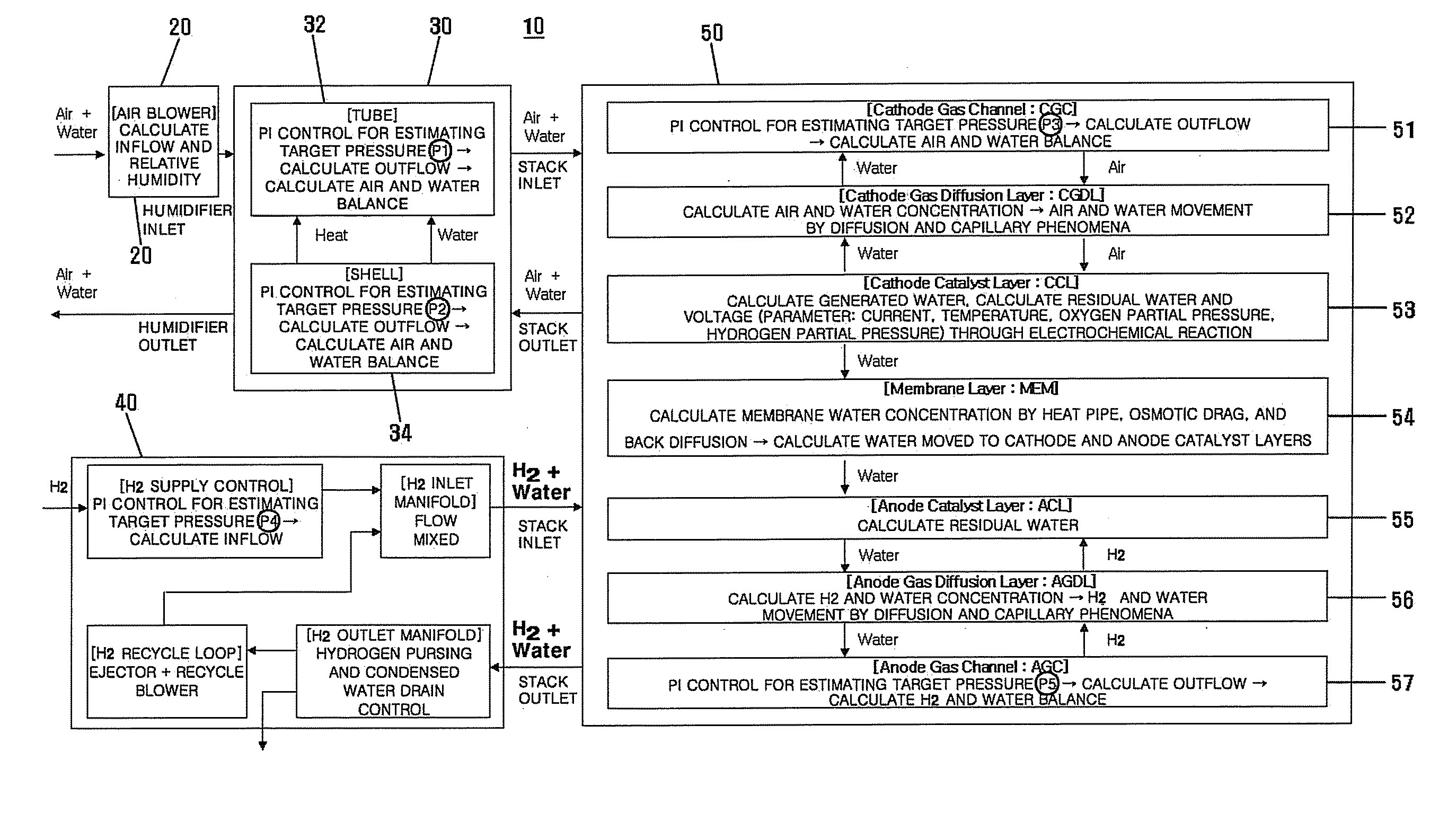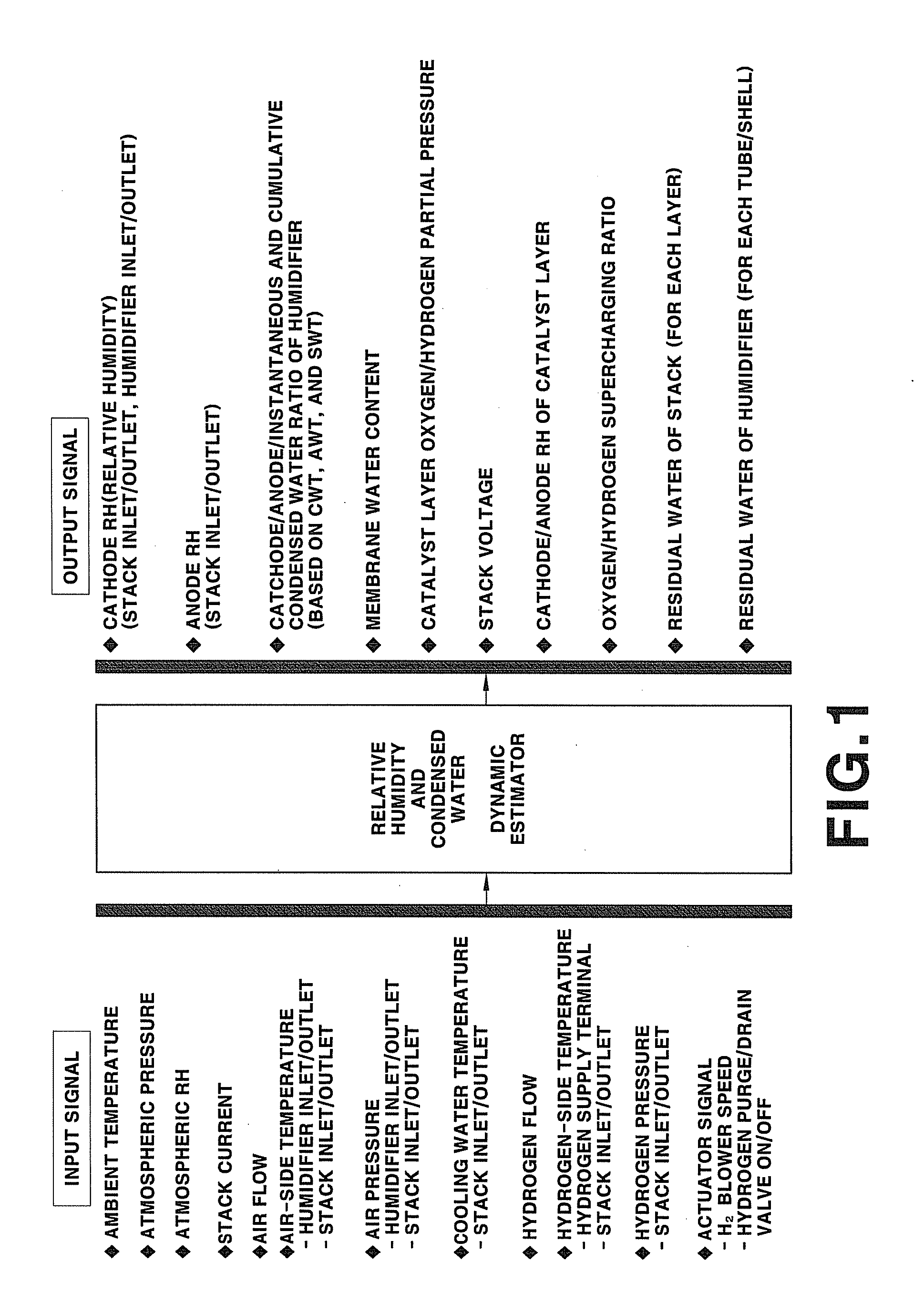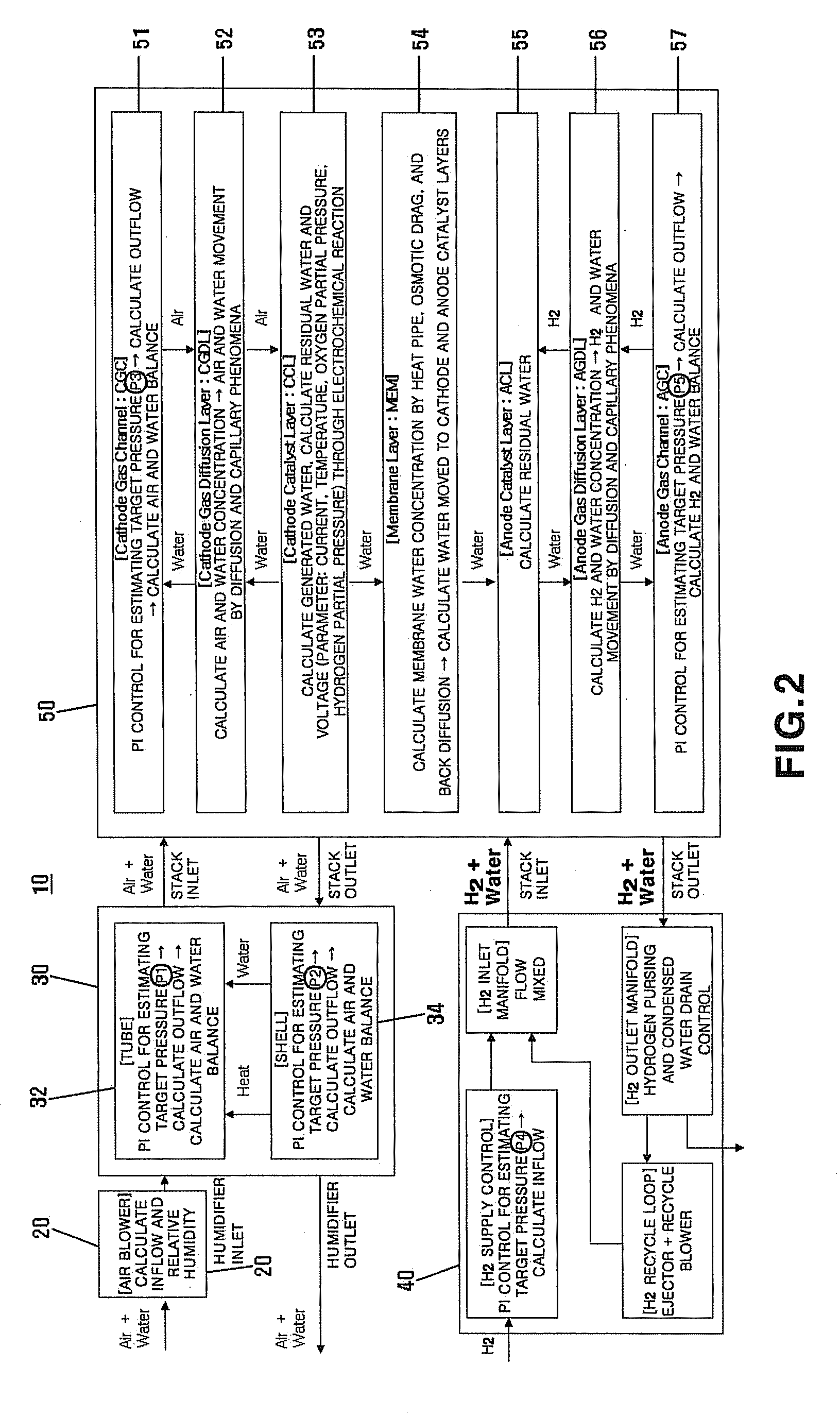Controller for estimating relative humidity and condensed water, and method for controlling condensed water drain using the same
a technology of relative humidity and condensed water, which is applied in the direction of fuel cells, electrical equipment, electrochemical generators, etc., can solve the problems of increasing the cost of materials, difficult to estimate the internal phenomena of the fuel cell system, and increasing the difficulty of fuel cell system internal phenomena estimation
- Summary
- Abstract
- Description
- Claims
- Application Information
AI Technical Summary
Benefits of technology
Problems solved by technology
Method used
Image
Examples
first embodiment
[0093]As shown in the flowchart of FIG. 7A, in a first step (S101), a residual amount of condensed water based on water balance in the anode condensed water collector may be calculated using Equation (1).
Residualcondensedwater[kg]=∑t=0t=∞[AWT-(Anodecondensedwaterdrainvalveon)×(Condensedwateroutflowpersecond)]×Δt+Residualcondensedwaterinitialvalue(1)
[0094]In a further step (S 102), the residual amount of condensed water may be compared with a product of the density (ρ[kg / m̂3]) of condensed water and the total volume (V1[m̂3]) of the condensed water collector, and a duration (Δt) may be compared with a reference value (t1).
[0095]In a further step (S103), if the residual amount of condensed water is greater than the product of the density (ρ[kg / m̂3]) of condensed water and the total volume (V1[m̂3]) of the condensed water collector, and the duration (Δt) is greater than the reference value (t1), it is determined as a warning stage of a condensed water level sensor.
[0096]As the drain va...
second embodiment
[0101]As shown in the flowchart of FIG. 7B, the residual amount of condensed water based on water balance in the anode condensed water collector may be calculated using Equation (1) in a first step (S201).
[0102]Next, if the residual amount of condensed water is equal to or smaller than about 0, and the duration is greater than a reference value (t5) in a further step (S202), it may be determined as a warning stage of a condensed water level sensor in a next step (S203).
[0103]That is, as the drain valve is excessively opened due to a failure of the water level sensor, it is determined that vehicle fuel efficiency may be reduced (reduction of hydrogen utilization rate), and a hydrogen leakage sensor may alarm due to leakage of hydrogen instead of condensed water.
[0104]Accordingly, if calculated hydrogen utilization rate is smaller than a value obtained by subtracting hydrogen utilization rate acceptable reference value (H2_Util_TH) from normal hydrogen utilization rate map, or the hyd...
third embodiment
[0114]As shown in the flowchart of FIG. 8A, the cumulative amount of condensed water, the cumulative amount of generated water, and the cumulative condensed water estimated value, based on the operation of the drain valve in the anode condensed water collector, may be calculated using Equations (3), (4), and (5) in a first step (S301).
Cumulativecondensedwater[kg]=∑t=0t=∞[(Anodecondensedwaterdrainvalveon)×(Condensedwateroutflowpersecond)]×Δt(3)Cumulativegeneratedwater[kg]=∑t=0t=∞[(stackcurrent×stacknumber×0.018)÷(2×Faradayconstant]×Δt(4)Cumulativecondensedwaterestimate[kg]=∑t=0t=∞[AWT]×Δt(5)
[0115]In this case, the drain valve operation-based cumulative condensed water ratio (AWT_ratio1) and the estimator-based cumulative condensed water ratio (AWT_ratio2) may be calculated by Equations (6) and (7) below.
AWT_ratio1=cumulativecondensedwatercumulativegeneratedwater×100%(6)AWT_ratio2=cumulativecondensedwaterestimatecumulativegeneratedwater×100%(7)
[0116]If the cumulative condensed water r...
PUM
| Property | Measurement | Unit |
|---|---|---|
| relative humidity | aaaaa | aaaaa |
| fluid dynamics | aaaaa | aaaaa |
| mass balance equation | aaaaa | aaaaa |
Abstract
Description
Claims
Application Information
 Login to View More
Login to View More - R&D
- Intellectual Property
- Life Sciences
- Materials
- Tech Scout
- Unparalleled Data Quality
- Higher Quality Content
- 60% Fewer Hallucinations
Browse by: Latest US Patents, China's latest patents, Technical Efficacy Thesaurus, Application Domain, Technology Topic, Popular Technical Reports.
© 2025 PatSnap. All rights reserved.Legal|Privacy policy|Modern Slavery Act Transparency Statement|Sitemap|About US| Contact US: help@patsnap.com



